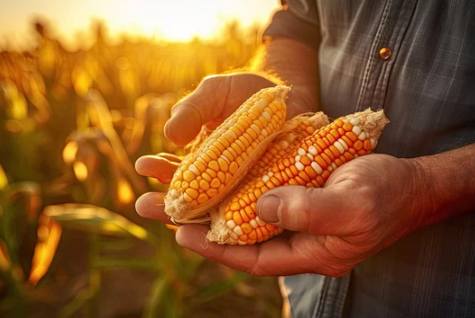
BLOG
South African maize farmers and workers are hard at work harvesting

The South African farmers and workers in the maize-growing regions are getting ready for a busy period. The harvest season has just started and should gain momentum in the coming weeks through to July for some areas.
There was already good progress in the first two weeks of this new marketing year. For example, farmers delivered to commercial silos 1,2 million tonnes of maize in the first two weeks of May, the new marketing year – 2024/24. The overall expected crop for the year is 13,3 million tonnes of maize, according to data from the Crop Estimates Committee.
The delivery figures should be much higher in the next few weeks, however, with possibly a slump in figures for last week's harvest activity (the third week of the month), which will be released by the South African Grain Information Services this Wednesday. Some farmers may have put the tools down last week and attended NAMPO, one of the largest agricultural exhibitions in the southern hemisphere, in Bothaville.
While we are happy to see these harvest volumes and hope the expected 13,3 million tonnes overall harvest materializes, we also think of many farmers who lost much of their crops during the mid-summer drought and won't have much to harvest this time. For them, the hope lies in the upcoming season that starts in October.
Fortunately, the weather forecasts also paint a promising picture of a return of a La Niña in the 2024/25 summer crop production season. This would bring much-needed rain and support agricultural production in South Africa and the broader Southern Africa region.
Still, there will be financial strain in the coming months resulting from the crop losses. We have yet to fully understand the impact of the recent drought on farmers' finances.
Indeed, the mid-summer drought led to significant crop losses. The expected harvest of 13,3 million tonnes of maize is down 19% from the 2022/23 season.
Still, if it materializes, the expected harvest will be sufficient to meet South Africa's annual maize consumption of roughly 12,00 million tonnes, leaving the country with a small export volume.
Consumers will likely see maize prices remain elevated for some time because of the potentially tight supplies later this year.
The Southern African regional demand, particularly for white maize, remains a significant upside driver of South African maize prices. Zimbabwe, Zambia, and Malawi have had a poor harvest and will require large maize imports later this year, going into the first quarter of 2025.
If we look beyond maize, we know that South Africa's 2023/24 summer grains and oilseed harvest is estimated at 16,0 million tonnes, down 20% from the previous season. This figure comprises maize, sunflower seed, soybeans, sorghum, groundnuts and dry beans.
Even with these grains and oilseeds, the harvest activity is underway, and we are monitoring the expected harvest to materialize. What is clear is that we are closing a challenging season for the South African farming community.
While in the coming weeks, we will be celebrating the harvest that is delivered to commercial silos, we will know that are plenty of farmers that lost the crop. The South African farmers planted a slightly higher area for summer grains and oilseed this season, which shows that the 20% year-on-year decline in the harvest we mention above results from the poor yields, not the reduction in area planted.
With relatively warm clear skies and warm weather conditions in the days ahead for much of South Africa, the farming community will be working hard to complete the harvest in areas spared of the mid-summer drought misery.
Wandile Sihlobo is the chief economist at the Agricultural Business Chamber of SA and a senior fellow in Stellenbosch University's Department of Agricultural Economics. His latest book is "A Country of Two Agricultures".

0 COMMENTS
LEAVE A COMMENT